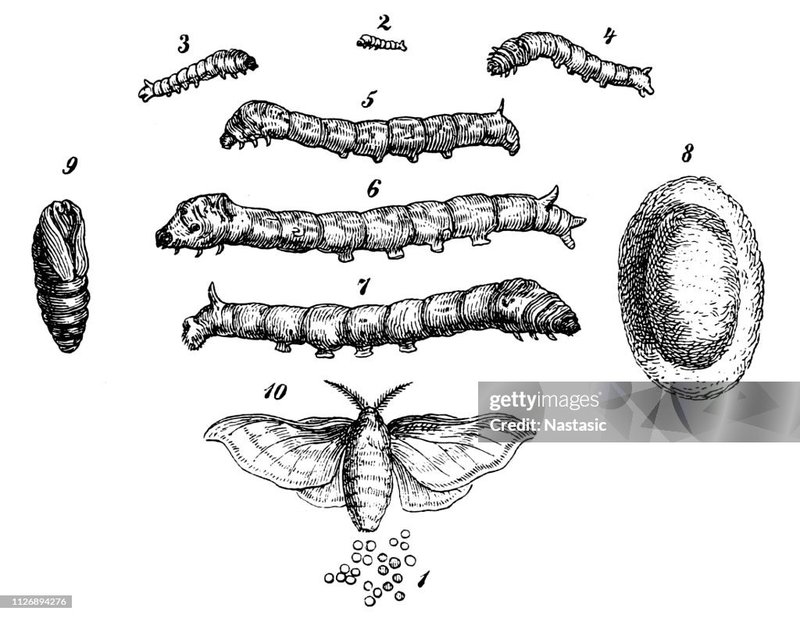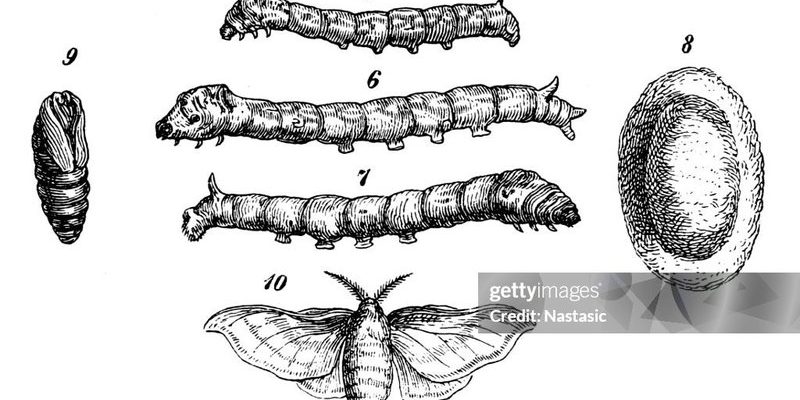
Think of silkworms as tiny workers in a silk factory—they don’t just spin silk all day and night. They need their downtime to recharge, grow, and ultimately perform their best. In this article, we’ll explore the details of silkworm sleep, what their rest phases look like, and why these patterns matter in nature.
What Are Silkworms?
To dive into the world of silkworm sleep, it’s helpful to first understand what silkworms are. Silkworms, or *Bombyx mori*, are the larvae of the silk moth. They’ve been domesticated for thousands of years, primarily for their ability to produce silk. So, next time you wear silk, remember that these little critters played a big role in making that happen!
Silkworms typically go through **four life stages**: egg, larva (or silkworm), pupa, and adult moth. The larval stage is where we’ll focus, since this is when they do most of their feeding and, you guessed it, sleeping! Understanding their life cycle helps us appreciate the importance of sleep and rest in their development.
Why Sleep Matters for Silkworms
You might wonder, why do silkworms need sleep? Just like us, sleep is critical for their health. When they sleep, silkworms can reset their bodies and conserve energy. This is especially important because these little creatures eat a lot, especially during their larval stage!
Resting allows silkworms to recover from their feeding frenzy. It’s like charging your phone; without sleep, they can’t function properly. In a way, their rest periods allow them to process the nutrients they’ve consumed and prepare for the next round of growth.
Let’s not forget growth, either. During sleep, silkworms undergo various biological processes, including **metabolism** and **cellular repair**. This is crucial for their transformation into pupae, where they’ll eventually become silk-spinning machines!
Silkworm Sleep Phases: An Overview
Silkworms experience different **sleep** and **rest phases** that can be likened to our own sleep stages. These phases can be broken down into two main types:
– **Active sleep**
– **Resting state**
Active sleep is when silkworms have higher metabolic activity. You might notice slight movements during this phase. It’s when their bodies are busy repairing cells and processing food. In contrast, the resting state is what it sounds like: they stay still and conserve energy, preparing for when they wake up and start munching on mulberry leaves again.
Understanding these sleep phases is essential for anyone raising silkworms or studying them. It emphasizes the need for a suitable environment—one that promotes their natural sleep patterns.
How Do Silkworms Sleep? A Closer Look
Silkworms don’t sleep like humans, but they do display visible signs of rest. When they’re ready to sleep, they often curl up in a spiral shape. It’s pretty adorable if you ask me! This curling act not only shows they are ready to sleep, but it also protects them from potential threats.
Their sleep cycles tend to follow a pattern influenced by the time of day. Silkworms often experience deeper sleep at night, corresponding with their nocturnal nature. You might be wondering how long they sleep. Typically, they can rest for several hours—about 12 hours a day—although this can vary based on factors like temperature and feeding.
During warmer temperatures, silkworms may find it harder to rest. If they get too hot, they could be more active, leading to less sleep. This is another reason why those raising silkworms need to provide a controlled environment. It can make all the difference!
The Impact of Environment on Silkworm Sleep
Just as our sleep can be disrupted by noise or an uncomfortable bed, silkworms are affected by their surroundings too. A proper habitat is essential for their restful periods. The right temperature, humidity, and light conditions play a significant role in their sleep quality.
– **Temperature:** Silkworms thrive at temperatures around 20-28°C (68-82°F). If it gets too hot or too cold, you might see them become restless.
– **Humidity:** Keeping humidity levels balanced (around 60-70%) helps silkworms maintain their health.
– **Light:** They naturally respond to light and dark cycles. Exposing them to consistent light conditions mimicking night and day helps regulate their sleep patterns.
If you’re thinking about raising silkworms, remember: a comfortable environment leads to better sleep, which in turn results in healthier, happier silkworms.
Common Misconceptions About Silkworm Sleep
When learning about silkworm sleep, it’s easy to stumble into a few misconceptions. One common belief is that silkworms sleep as constantly as we do. While they do have periods of inactivity, it’s different from human sleep. Their sleep isn’t continuous; they alternate between active and resting phases.
Another misconception is that sleep isn’t vital for silkworms. In reality, inadequate rest can lead to stress, poor growth, and even death. This is particularly crucial during the larval stage when they’re growing the fastest.
Understanding these nuances can help you appreciate the complexities of silkworm life and their development. It goes to show that even the smallest creatures have sophisticated biological needs!
The Future of Silkworm Research and Sleep Studies
As we dive deeper into understanding silkworms, researchers are continuously studying their sleep phases and overall behaviors. This research can lead to better practices in silk farming and provide insights into more significant biological questions.
You might be curious about how technology plays a role here. Tools like **video monitoring** help scientists observe silkworm behavior without interruption. This can lead to groundbreaking insights about their sleep and development.
The more we learn about silkworm sleep, the more we can improve care practices. So, whether you’re a hobbyist or a professional in the silk industry, staying aware of these studies can benefit everyone involved.
Why Knowing Silkworm Sleep Matters
Ultimately, understanding silkworm sleep and rest phases isn’t just a quirky piece of knowledge; it’s crucial for anyone interested in their lifecycle or involved in silk production. Sleep directly affects their growth, health, and productivity. So, a few simple changes, like optimizing their environment, can lead to significant improvements in silk yield.
The next time you come across a silkworm, you might appreciate the importance of their rest phases a little more. Just like us, they need their sleep to thrive!
In conclusion, silkworms may seem simple, but their sleep and rest phases reveal so much about their biology and needs. Taking the time to understand these creatures not only fosters a deeper respect for nature but can also enhance practices in the silk industry. So, let’s keep learning and appreciating these remarkable little beings!

